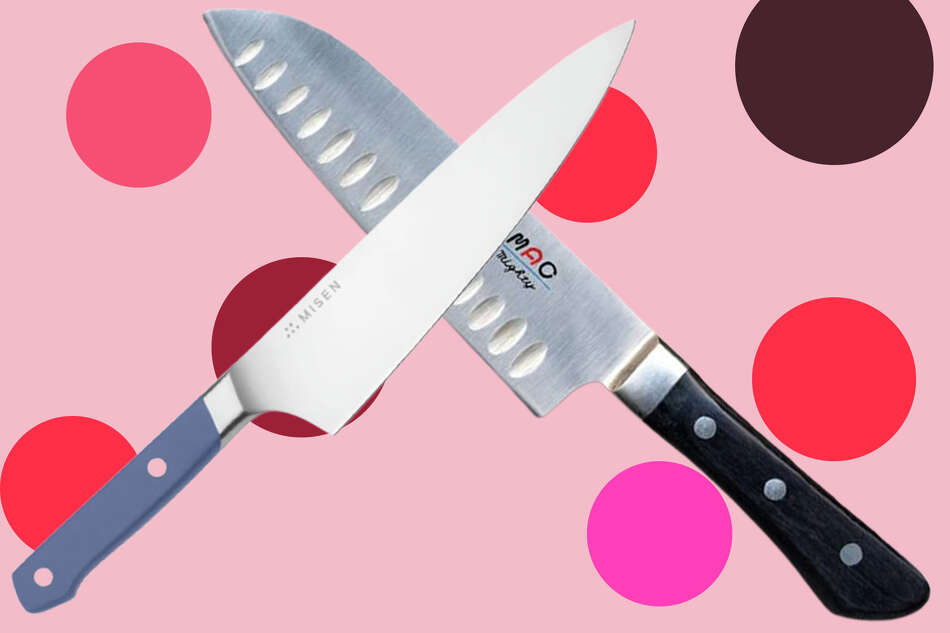Santoku knives are well-known to cooks. Due to its versatility and efficiency in kitchen activities, this blade has become very popular. What is a Santoku knife and how is it used?
We’ll explore the Santoku knife’s history, features, and versatility in this detailed overview. Let’s learn the Santoku knife’s mysteries!
What Is a Santoku Knife?
The Santoku knife, often known as the “knife of three virtues” or “three uses,” is Japanese. Slicing, dicing, and mincing give it its name. Santoku knives outperform Western kitchen knives in versatility and ease of use due to their broad, short blades.
The Origins of the Santoku Knife

Santoku knives are steeped in Japanese culinary heritage. As Western-style cuisine became popular in Japan, it originated in the mid-20th century. A multipurpose and efficient kitchen knife was the goal.
The Nakiri, a Japanese vegetable knife, inspired the Santoku knife. The narrow, flat Nakiri knife was used for slicing and chopping vegetables. As Western culinary skills and ingredients influenced Japanese cuisine, a more versatile knife was needed.
Japanese knife producers experimented with innovative designs that combined Japanese and Western knife qualities to suit this demand. Santoku knives emerged. “Santoku” means “three virtues” or “three uses,” indicating the knife’s proficiency in slicing, dicing, and mincing.
Professional and home cooks immediately adopted the Santoku knife. Its unique design improved kitchen efficiency and precision. Santoku knives are shorter and wider than Western-style chef knives, making them easier to control.
The broader blade surface is great for transporting food from the cutting board to the pan, while the flat edge allows for precision slicing and dicing.
Santoku knives become crucial in Japanese and international kitchens. Cooks of all levels loved its versatility and efficacy. The Santoku knife is still highly appreciated and frequently used, demonstrating its culinary significance.
Japan created the Santoku knife to meet culinary needs. Slicing, dicing, and mincing became easier with the Santoku knife, which combined Japanese and Western knife styles. The Santoku knife is a must-have for cooks due to its long history.
What Makes the Santoku Knife Unique?

Santoku knives are unique in design and functionality. Let’s examine what makes the Santoku knife special and useful in the kitchen.
Blade Design:
Santoku knives have 5–7-inch blades. The flat Santoku blade allows precise and controlled slicing, unlike a chef’s knife’s curved blade. Its flat edge makes straight cuts easy, making it excellent for precision work.
Granton Edge
Santoku knives often have granton edges, which are shallow oval-shaped indentations along the blade. Air pockets in these indentations reduce friction and keep food from sticking to the blade. When cutting delicate foods like fish or vegetables, the granton edge makes clean, smooth cuts.
Versatility:
Versatility distinguishes the Santoku knife. It’s a favorite among chefs and home cooks since it’s versatile. The Santoku knife slices, dices, and minces vegetables, fruits, meats, and herbs. Santoku knives cut onions, tomatoes, and fowl.
Effective Chopping:
Chopping is easy with the Santoku knife’s wide blade and straight edge. Its rocking motion makes chopping ingredients fast and easy. The Santoku knife’s excellent cutting speeds up stir-fries and herb garnishing.
Maneuverability:
The Santoku knife promotes mobility and control. Its shorter blade length and smaller weight make it easier to handle and cut with precision. Santoku knives have ergonomic handles that improve grip and reduce hand fatigue.
General Use:
Despite its name, the Santoku knife can do more than slice, dice, and mince. Santoku knives are versatile cooking tools. It cuts meats, root vegetables, and herbs with equal ease.
Santoku Knife FAQs
Santoku knives for meat?
Santoku knives can cut and prepare various meats. Its sharp blade and adaptable design allow for precise meat slicing. Santoku knives can slice cooked meat, trim fat, and portion slices.
Left-handed Santoku knives?
Right-handed and left-handed people can use Santoku knives. It’s important to buy a Santoku knife with an ambidextrous handle for comfort and control.
Can a Santoku knife peel or bone?
Santoku knives are versatile, however they may not be ideal for peeling or boning. These jobs frequently demand thinner, more flexible knives. Use a paring or boning knife for such operations.
What Santoku knife should I buy?
Personal preferences and needs determine the best Santoku knife. Consider blade material, handle comfort, weight, and balance. Try out different Santoku knives to discover one that fits your cutting style and feels good.
Conclusion
Finally, the Santoku knife is an essential culinary tool. Slicing, dicing, mincing, and chopping are easy with its flat blade, granton edge, and agility.
A Santoku knife may improve your cuisine, whether you’re a chef or a home cook. Remember the Santoku knife’s amazing abilities while choosing a kitchen knife!
